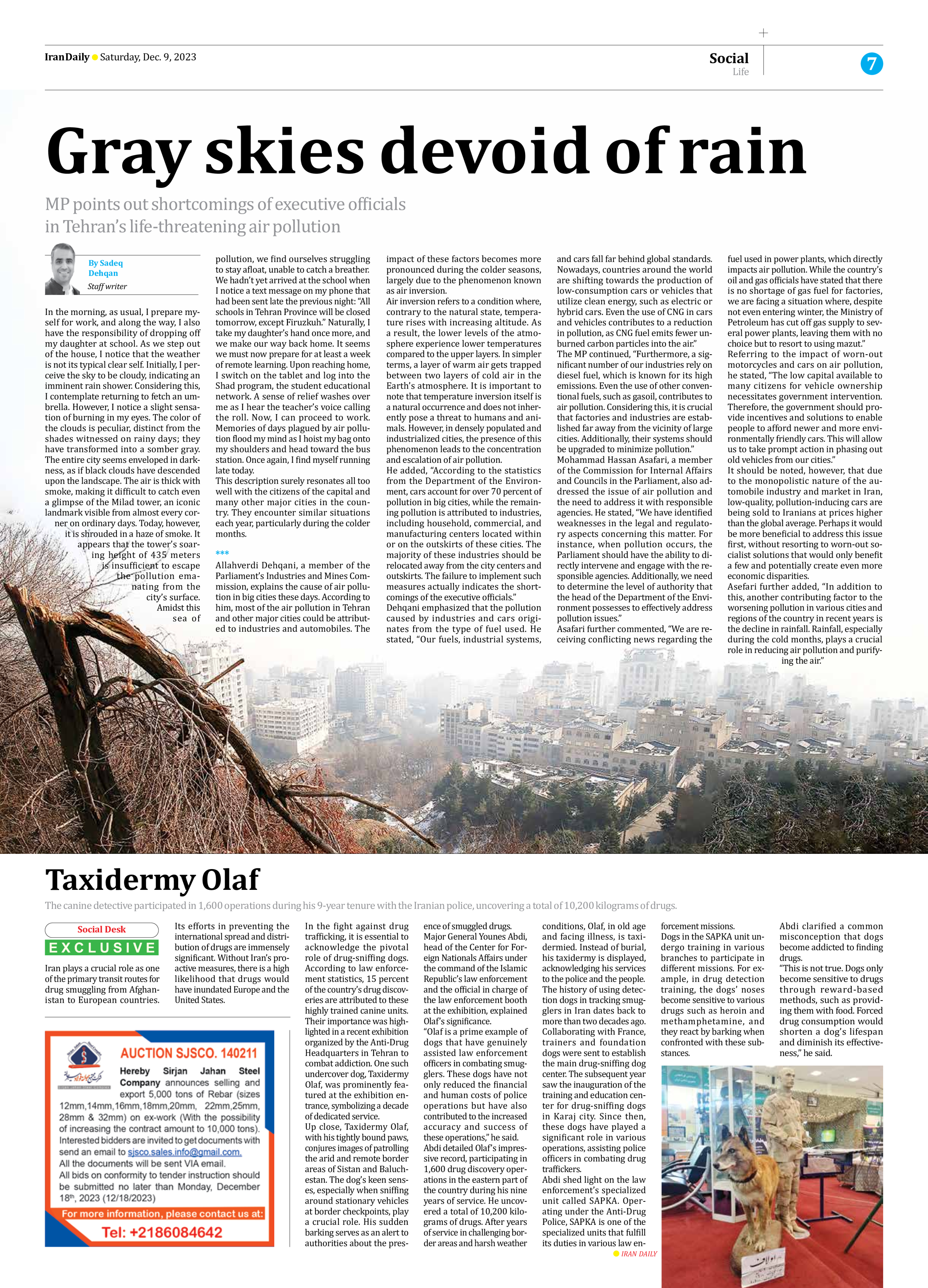
Taxidermy Olaf
The canine detective participated in 1,600 operations during his 9-year tenure with the Iranian police, uncovering a total of 10,200 kilograms of drugs.
Iran plays a crucial role as one of the primary transit routes for drug smuggling from Afghanistan to European countries. Its efforts in preventing the international spread and distribution of drugs are immensely significant. Without Iran’s proactive measures, there is a high likelihood that drugs would have inundated Europe and the United States.
In the fight against drug trafficking, it is essential to acknowledge the pivotal role of drug-sniffing dogs. According to law enforcement statistics, 15 percent of the country’s drug discoveries are attributed to these highly trained canine units. Their importance was highlighted in a recent exhibition organized by the Anti-Drug Headquarters in Tehran to combat addiction. One such undercover dog, Taxidermy Olaf, was prominently featured at the exhibition entrance, symbolizing a decade of dedicated service.
Up close, Taxidermy Olaf, with his tightly bound paws, conjures images of patrolling the arid and remote border areas of Sistan and Baluchestan. The dog’s keen senses, especially when sniffing around stationary vehicles at border checkpoints, play a crucial role. His sudden barking serves as an alert to authorities about the presence of smuggled drugs.
Major General Younes Abdi, head of the Center for Foreign Nationals Affairs under the command of the Islamic Republic’s law enforcement and the official in charge of the law enforcement booth at the exhibition, explained Olaf’s significance.
“Olaf is a prime example of dogs that have genuinely assisted law enforcement officers in combating smugglers. These dogs have not only reduced the financial and human costs of police operations but have also contributed to the increased accuracy and success of these operations,” he said.
Abdi detailed Olaf’s impressive record, participating in 1,600 drug discovery operations in the eastern part of the country during his nine years of service. He uncovered a total of 10,200 kilograms of drugs. After years of service in challenging border areas and harsh weather conditions, Olaf, in old age and facing illness, is taxidermied. Instead of burial, his taxidermy is displayed, acknowledging his services to the police and the people.
The history of using detection dogs in tracking smugglers in Iran dates back to more than two decades ago. Collaborating with France, trainers and foundation dogs were sent to establish the main drug-sniffing dog center. The subsequent year saw the inauguration of the training and education center for drug-sniffing dogs in Karaj city. Since then, these dogs have played a significant role in various operations, assisting police officers in combating drug traffickers.
Abdi shed light on the law enforcement’s specialized unit called SAPKA. Operating under the Anti-Drug Police, SAPKA is one of the specialized units that fulfill its duties in various law enforcement missions.
Dogs in the SAPKA unit undergo training in various branches to participate in different missions. For example, in drug detection training, the dogs’ noses become sensitive to various drugs such as heroin and methamphetamine, and they react by barking when confronted with these substances.
Abdi clarified a common misconception that dogs become addicted to finding drugs.
“This is not true. Dogs only become sensitive to drugs through reward-based methods, such as providing them with food. Forced drug consumption would shorten a dog’s lifespan and diminish its effectiveness,” he said.







